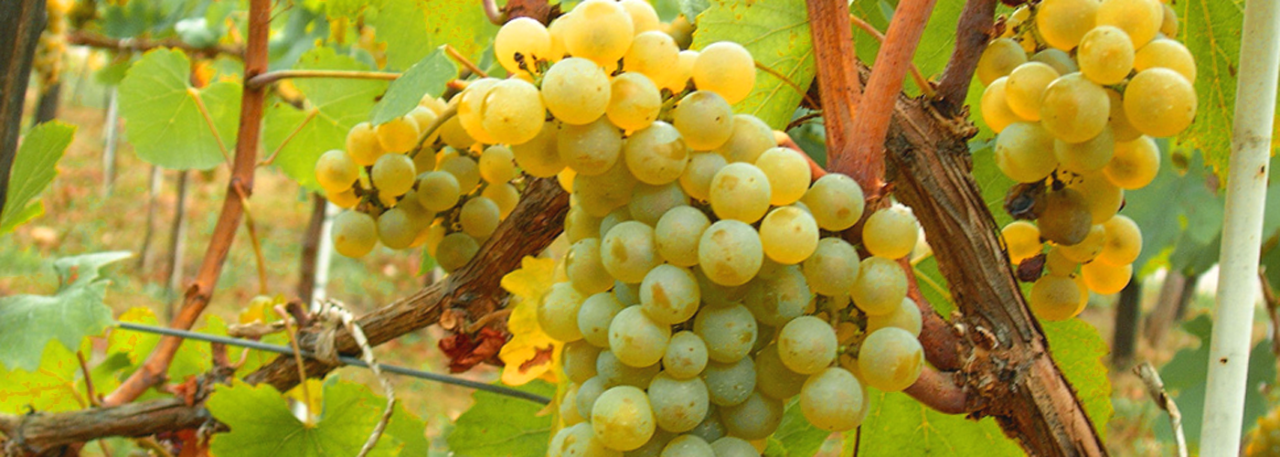Max. Summer temp. : 23 ºC
Min. Winter temp.: -3 ºC
Average rainfall: 318 mm annually
Average sunshine: 2,600 hours annually
.png.transform/rendition-xs/image_image%20(1).png)

Rueda (Castile-Leon)
Max. Summer temp. : 23 ºC
Min. Winter temp.: -3 ºC
Average rainfall: 318 mm annually
Average sunshine: 2,600 hours annually
The Denomination of Origin Rueda was approved by the Ministry of Agriculture on January 12, 1980; it was the first Denomination of Origin to be approved in the Region of Castilla y León, after years of hard work in order to earn acknowledgement and protection for its autochthonous grape variety: the Verdejo.
The Denomination of Origin Rueda possesses exceptional natural resources for the production of top-quality wines. Specialised in making internationally renowned white wines. Also, from the 5 of August of 2008 the red wines and rosé are protected by the Denomination of Origin Rueda.
The production area included in the Denomination of Origin Rueda is located in the Region of Castilla y León and consists of 74 towns and villages, 53 of which are located south of the province of Valladolid, 17 to the west of Segovia and 4 north of Ávila.
The different grape varieties grown here are irregularly scattered over the several municipal districts comprising Rueda Appellation of Origin. However, it is the area found within the boundaries of La Seca, Rueda and Serrada where vineyards are in a higher proportion and greater intensity.
There is only one D.O. in the region of Rueda, which is “Rueda D.O.”. Within the D.O. there are many styles of wine, and these styles each get their own back label.
The Rueda character: a combination of Verdejo grapes, continental weather and gravelly soils.
- Verdejo: the autochthonous grape
The Verdejo grape has been grown in the Denomination of Origin Rueda for over centuries. Its origins date back to the 11th century, to the times of king Alfonso VI, when the basin of the river Duero was repopulated with people from Cantabria, the Basque Country and the Muslim southern regions; it was very probably the latter, the so-called mozárabes, who brought the Verdejo variety from North Africa, after a period of adaptation in the south of Spain.
It has a unique flavour, with a hint of scrub herbs, a fruity touch and an excellent level of acidity. The extract, a key factor when assessing the personality of great white wines, is perceived through its volume and its characteristic bitter touch, which leaves a glint of originality in the mouth, accompanied by a rich fruity expression. These wines are harmonious, and their aftertaste invites to go on drinking.
- The weather
With very long, cold winters, short springs with late frosts, and dry, hot summers, only altered by untimely storms. In terms of latitude, the Rueda region is located within the Mediterranean area. Its altitude, however, corresponds to that of a continental region.
- The soil
The best vineyards in the D.O. Rueda have led to the typical “gravelly” soils. Dark grey-brown soils, rich in calcium and magnesium, stony but easy to farm, with good ventilation and draining, and limestone outcrops on the hilltops. Permeable and healthy, their texture varies from sandy-loamy to loamy.
- Wine Making
Today, provenance and origin-related issues prevail over alcoholic content and aging time.
Grapes are harvested when they are at just the right point of maturity, an important factor for winemaking. The mechanised grape harvesting process avoids the oxidation of the must, and a large part of the harvesting therefore takes place at night, with no sunlight to oxidise the must. The grapes enter the cellars at 10-15°C, as opposed to September’s daytime temperatures of 24-28°C.
Fermentation takes place in stainless steel containers fitted with temperature control devices, cold-treatment machines in some cases, and vacuum filters that clean the must without taking away the nutrients necessary for the yeasts. The wine is now clean and pale, having been filtered and having undergone quick cold decantations.
Three months later the wine has taken on a slightly yellowish colour, with a youthful, greenish hue, and has a fresh, fruity aroma and flavour. We now reach the crucial stage of bottling, Rueda Verdejo wine’s claim to fame: an unaged harvest wine, the result of a completely aseptic process and the implementation of state-of-the-art technology, with the Verdejo grape full of primary, powerful, elegant aromas.
Another example of these “new times”, and an attempt to provide the market with still another choice in the wide variety of Rueda wines, is the barrel fermentation carried out by some wine cellars in the D.O. Rueda, which produces well-structured wines with a strong personality, offering consumers a plethora of sensations thanks to a unique combination of technology and the savoir faire of our winemakers.
Regulatory Council
Consejo Regulador DO Rueda
Real, 8
47490 Rueda
Valladolid
Tel.: +34 983 868 248
comunicacion@dorueda.com
www.dorueda.com
Sources:
- Spanish Ministry of Agriculture
The Verdejo grape has a unique flavour, with a hint of scrub herbs, a fruity touch and an excellent level of acidity.

